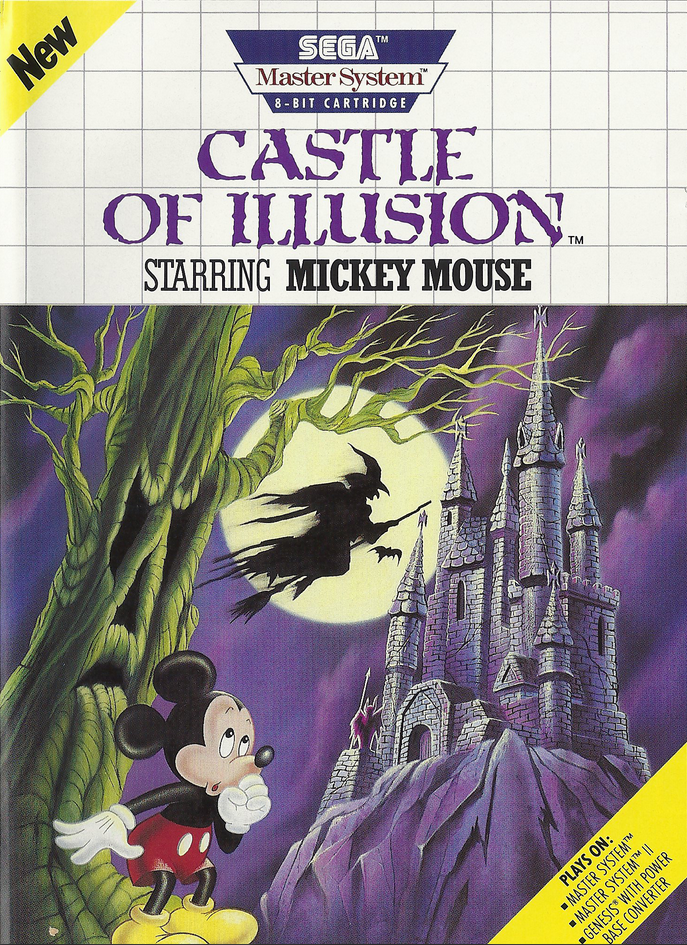
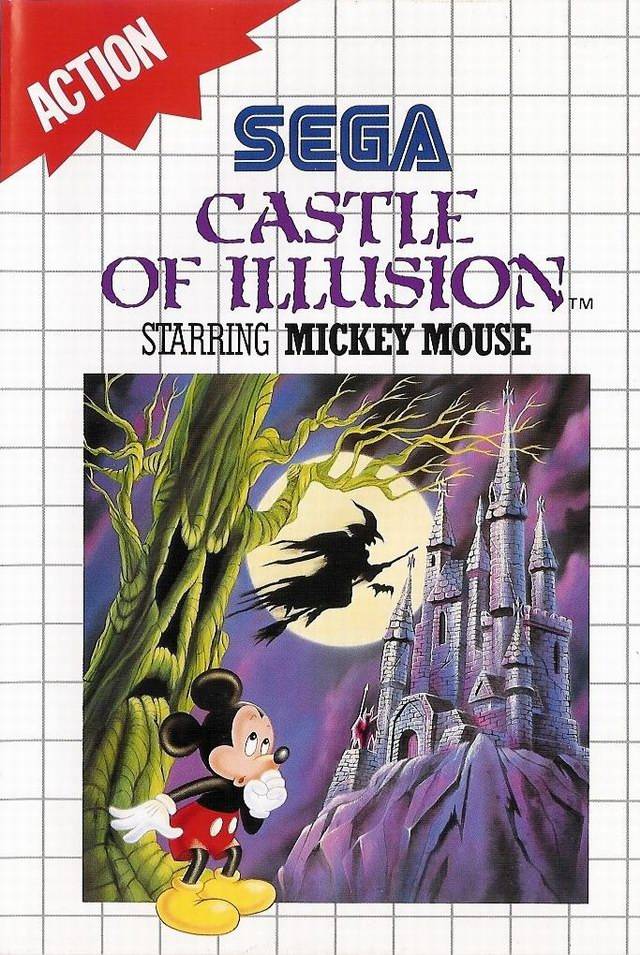
PUBLISHER/DEVELOPER: Sega
RELEASE DATE: 02/1991 (US, EU)
ALSO ON: Game Gear (see below)
By late 1990, the 16-bit party was just beginning. Castle of Illusion – one of Sega’s flagship games for the Genesis that year – released in December 1990, only 16 months after the Genesis debuted in North America. The SNES was a year out from launch in North America. The NES was still going strong and 8-bit platformers like Super Mario Bros. 3 were “the hotness.” Pre-Sonic the Hedgehog, I can imagine many kids receiving the Genesis with Castle of Illusion and not being disappointed. The game may have played like a platformer of its day, but its outstanding visuals more than justified the cost of a new console.
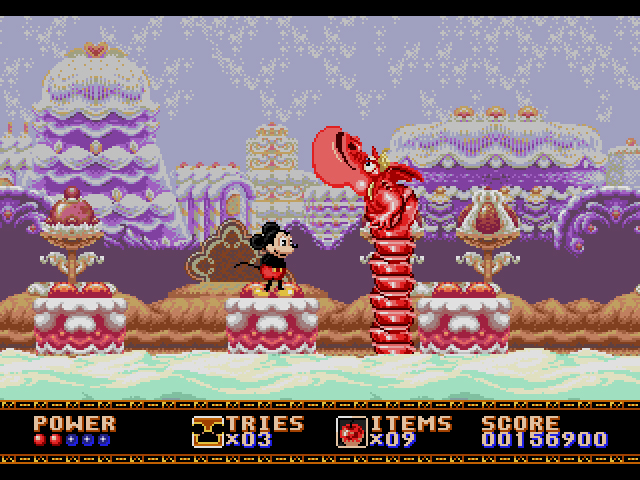
Castle of Illusion for the Genesis is indeed a visual masterpiece – a Disney cartoon come to life – but the game clearly values style over substance. The beautifully rendered environments, Mickey’s smooth animation, the gorgeous storybook presentation: all meant to distract from the 8-bit era hop-and-bop platforming.
And then there’s Castle of Illusion for the Master System. Sega’s 8-bit versions of their popular arcade/Genesis titles often suffered during conversion (see: Golden Axe, E-SWAT, among many others). Castle of Illusion actually thrives. While the graphics do take a considerable hit, the quaint, lighthearted platforming feels much more at home here than on the Genesis.
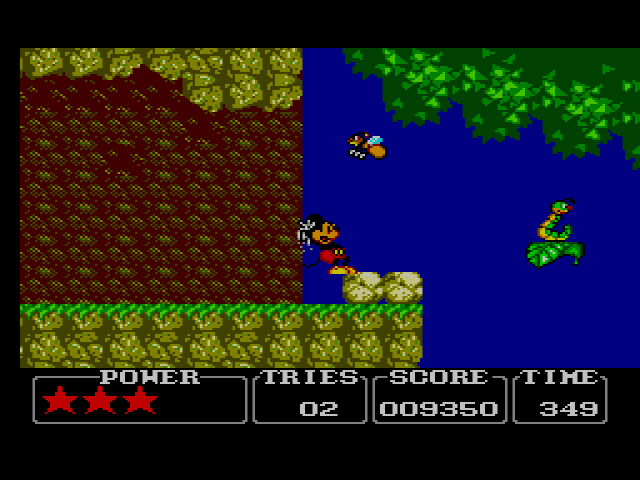
As in the Genesis version, Mickey’s out to save Minnie from the evil witch, Mizrabel. He can still throw objects, still butt pound his enemies into oblivion. Mickey also smiles constantly. He struts and smiles, smiles and struts. His girlfriend may be kidnapped, but he knows he’s gonna rescue her ’cause, well, he’s Mickey. A more optimistic video game character, there isn’t.
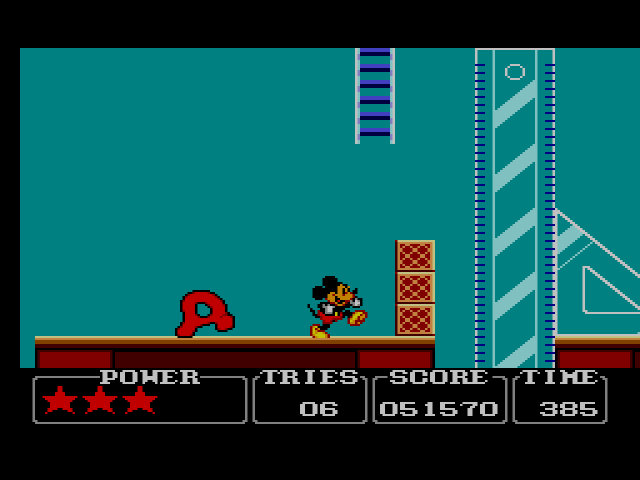
The Enchanted Forest, Toyland, The Library, and the Castle stages all hail from the Genesis version, while the Clock Tower and the Dessert Factory are exclusive to the Master System and Game Gear versions. The carryover levels all have different layouts, making them feel more like remixed imaginings of the same idea. And while the level design isn’t non-linear by any means, most levels have branching paths that encourage replay value, something 16-bit Castle of Illusion lacked.
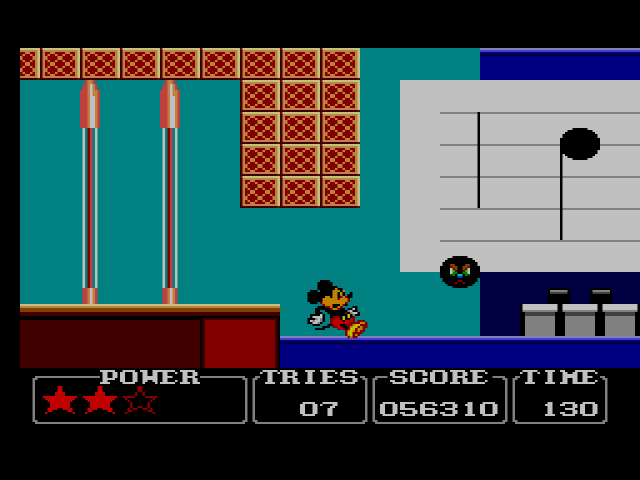
If you’ve played the 16-bit version or any side-scrolling platformer in the last 30 years, you’ll know what to expect here. Mickey butt pounds his way from left to right, destroying enemies and uncovering hidden treasures, like coins (for points), cake (for health), and mouse ears (for extra lives). There are a couple automatic-scrolling portions that change up the proceedings, but otherwise, Castle of Illusion is mostly Platforming 101.
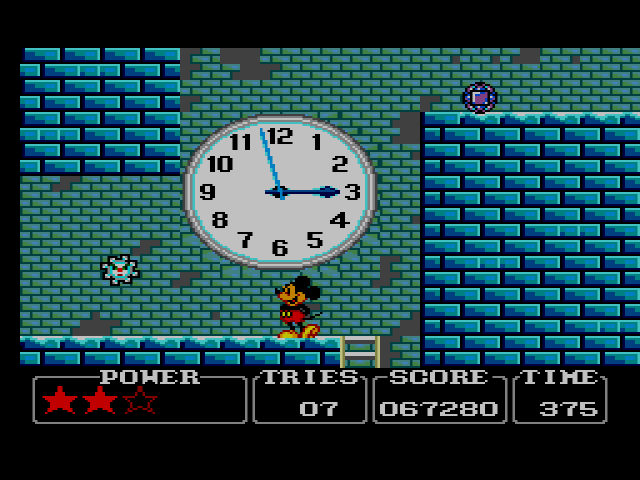
I say, “mostly.” Castle of Illusion has something that most non-Mario platformers don’t: confidence. Much like Mickey’s unparalleled swagger, Castle of Illusion knows it’s a polished, well-playing game. It doesn’t matter that there are few surprises or that you can beat the game in about an hour. It does what it does really well, arguably better than the majority of Master System platformers.
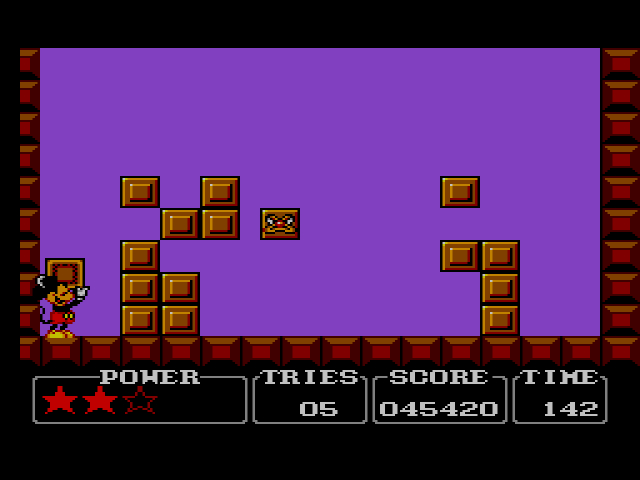
The Genesis would go on to have much better platformers that pushed the genre forward and took more advantage of the hardware. But the Master System? In the States at least, Castle of Illusion was one of the system’s swansongs. Downgraded visuals aside, Mickey still looks and moves like a fluid cartoon character. The level layouts here are more interesting and have slightly more depth than their Genesis counterparts. The simple platforming caters more to the Master System. This is why, dare I write it, I prefer 8-bit Castle of Illusion over its beloved 16-bit brother. Genesis Castle of Illusion has the visual prowess to stun a retro gamer in their tracks, but Master System Castle of Illusion keeps them coming back for more.
B+
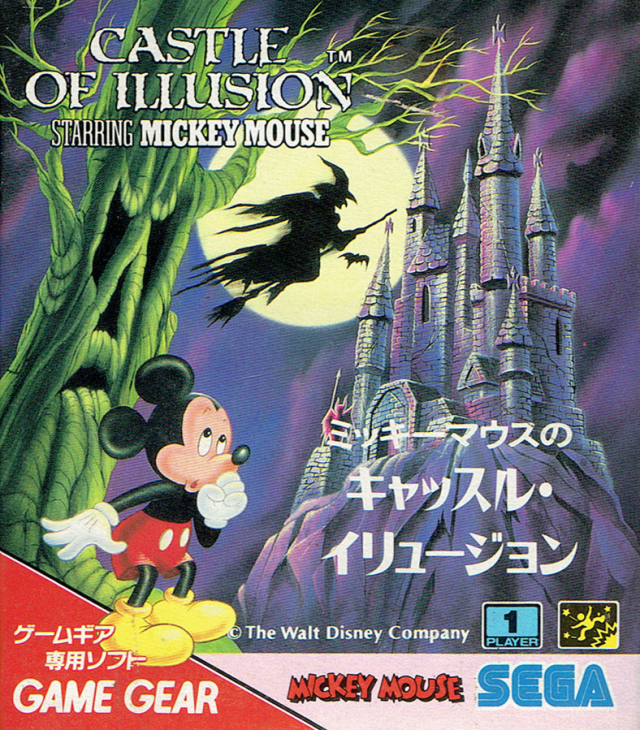
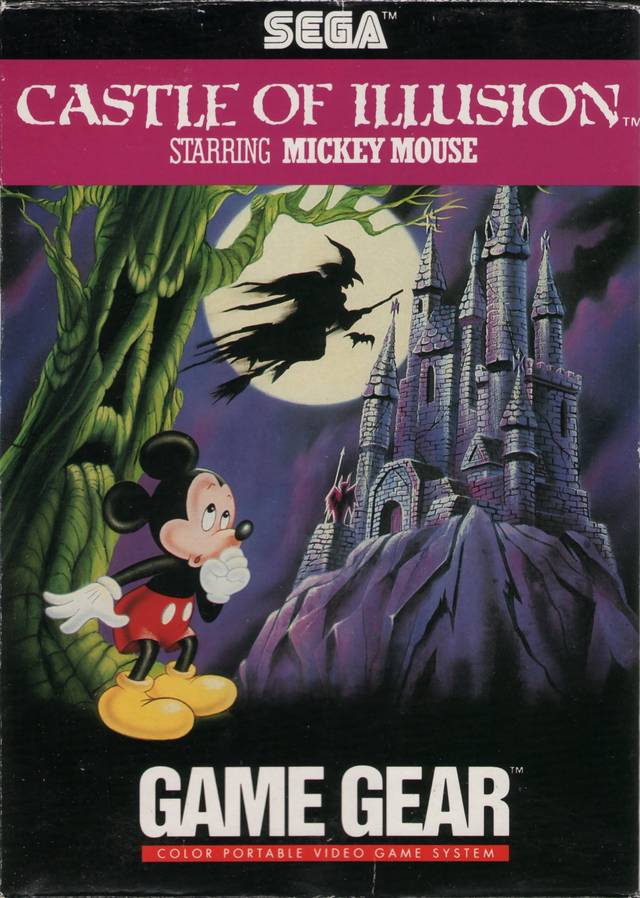
PUBLISHER/DEVELOPER: Sega
RELEASE DATE: 03/21/91 (JP), 06/1991 (US, EU)
Castle of Illusion on the Game Gear is a slightly prettier port of the Master System game. The colors are a little sharper. The music isn’t quite as shrill. The font used for the dialogue and menu screen is more pleasing to the eye (seriously). Mickey’s as carefree as ever, though. Some things never change.
Mickey’s castle-bashing, illusion-bending platformer works just as well on the Game Gear as it does on the Master System. In fact, Castle of Illusion might be the first Game Gear game up to this point to justify the handheld’s existence. Sure, games like Wonder Boy (or Revenge of Drancon if you must) and Dragon Crystal are great, but the former is a port of a much older Master System title, while the latter – a dungeon-crawler RPG – is about as niche as handheld games got in ’91. Killer apps, these are not.
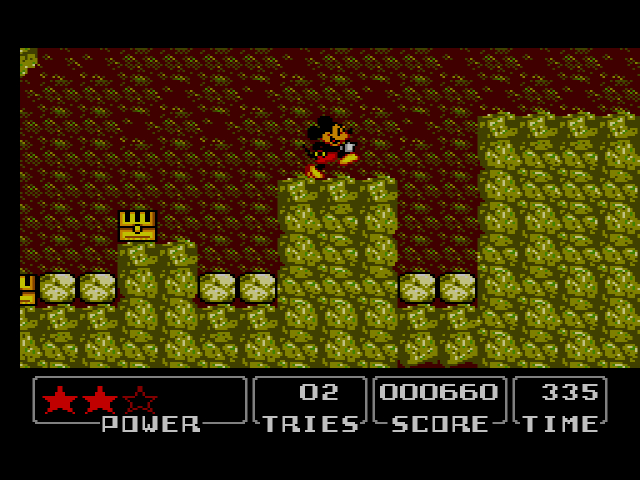
Castle of Illusion, however, was a headline Genesis game, and several months later, it was on the Game Gear. Doesn’t matter that it’s a gussied up port of the Master System version. Castle of Illusion was the killer app Sega’s handheld desperately needed.
B+
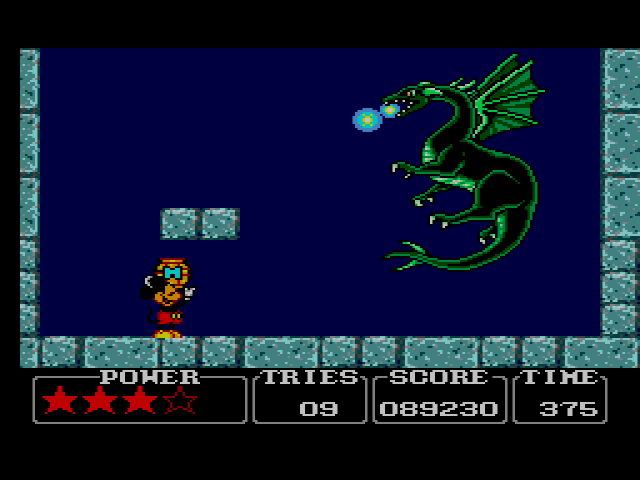

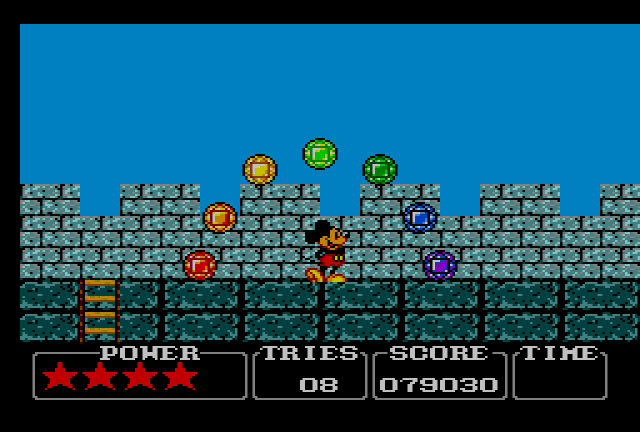
5 replies on “Castle of Illusion Starring Mickey Mouse (SMS/GG, 1991)”
I’m glad you liked it – I think it’s a much better game than the 16 bit version. After almost two decades of anticipation I played the 16 bit version for the first time over Christmas 2008 and found it hugely underwhelming.
Wasn’t there a clock tower in the 16 bit version as well?
I believe the clock tower is part of the castle level in the Genesis version.
And yeah, 8-bit Castle of Illusion just feels right. I don’t dislike the 16-bit version, but for all the love that game gets, I found it a bit underwhelming.
I really like the 8-bit version of this game. It has this Duck Tales/Chip & Dale nostalgic feel to it, which I find really appealing. They really got almost everything right in this case. The only thing I’d like to see is a somewhat higher difficulty level, but seeing that this game is more about just the sheer fun instead of challenge, I think what they did with it is justifiable. In fact, it’s so good that I think I’m gonna replay it this weekend, haha.
I know what you mean about the higher difficulty, but as I get older and have less time, I’m thankful for easier challenges.
Wait till you get to Land of Illusion!! That game is even better!!